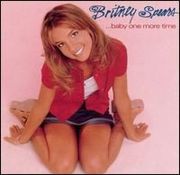| Pop music | |
|---|---|
| Stylistic origins: | A variety of influences, especially Rock and Roll and Rhythm and Blues |
| Cultural origins: | 1950s United States |
| Typical instruments: | Electric guitar, Bass guitar, Drums, Keyboard, Synthesizers |
| Mainstream popularity: | Continuous from 1960s |
| Subgenres | |
| Bubblegum pop - Traditional pop music | |
| Fusion genres | |
| Pop punk - Pop rap - Power pop | |
| Regional scenes | |
| Asia: Cantopop, Mandarin pop, Indian pop, J-pop, K-pop, String (Thai pop) - Europe: Europop, Britpop, Nederpop - Americas: United States, Música Popular Brasileira | |
| Other topics | |
| Boy band - Girl group | |
Pop music is an important genre of popular music distinguished from classical or art music and from folk music [1]. The term indicates specific stylistic traits but the genre also includes artists working in many styles (rock, hip hop, rhythm and blues (R&B), and country), and it is reasonable to say that "pop music" is a flexible category. It may also be referred to as soft rock or pop/rock.
Contents |
Characteristics as a subgenre
Pop music is often defined as music produced commercially, for profit, or "as a matter of enterprise not art" though it may more usefully be defined by market, ideology, production, and aesthetics. Pop "is designed to appeal to everyone" and "doesn't come from any particular place or mark off any particular taste." It is "not driven by any significant ambition except profit and commercial reward...and, in musical terms, it is essentially conservative." It is "provided from on high (by record companies, radio programmers and concert promoters) rather than being made from below...Pop is not a do-it-yourself music but is professionally produced and packaged." Frith 2001, p.95-96)
While Pop and Rock music each appeal to mass culture, often aim for (and achieve) commercial success, feature catchy tunes and melodies, and emphasize rhythm, Rock music has a much more direct connection to the blues and folk from which it originated, while Pop can be thought of as the current incarnation of Popular music, which has existed for centuries.
History of pop music
1930s and 1940s
Styles influencing the later development of pop include the Blues (Chicago), and Country (Tennessee).
1950s
Early Pop music artists include Frank Sinatra, Bobby Darin, and Peggy Lee.
1960s
 Michael Jackson on his 27x
Platinum (diamond) certified Thriller album.
Michael Jackson on his 27x
Platinum (diamond) certified Thriller album.
Pop explodes with The Beatles, Carole King, Neil Diamond, Burt Bacharach, Aretha Franklin, Isley Brothers, Ray Charles, Stevie Wonder, the Supremes, Marvin Gaye, Beach Boys, Bob Dylan, Simon and Garfunkel, The Byrds.
1970s
A proliferation of new sounds from the disco of the BeeGees, the piano sounds of Billy Joel and Elton John, the country of the Eagles, the rock-influenced pop of artists like Rod Stewart, Steely Dan, and Fleetwood Mac.
1980s
One of the biggest highlights for pop music in the 1980's was Michael Jackson's second solo album, Thriller, which went on to become the best-selling album of all time. Thriller earned Mr. Jackson the nickname "King Of Pop". Other artists included Madonna, Duran Duran, the Police, Abba, Phil Collins, and Culture Club.
1990s
 Britney Spears on the cover of her 14x
platinum
debut album
...Baby One More Time
Britney Spears on the cover of her 14x
platinum
debut album
...Baby One More Time
Resurgence of boy band and girl band trends. From the UK came the likes of Take That, Blue, the Spice Girls, a highly successful formula. Irish boy bands of the time include Boyzone and Westlife. The US had New Kids On The Block followed by the Backstreet Boys, Hanson and then 'N Sync and Britney Spears.
Sound and themes
Pop music, in whatever musical influence form that it derives from, may be produced by a more basic songwriting approach and arrangement. The emphasis is often on a simpler melody, which makes the songs more memorable, and may use stripped-down rhythms. The combination of the melody and the rhythm allows for harmony to be a driving force of the song, which can make it more pleasing to the listener's ear. Themes range from personal songs, to vivacious party jams. However, the most common theme deals with the wide range of emotions which stems from physical or emotional love.
Music videos and live performances are often used for exposure in the media, and artists may have extravagant stage shows and use choreographed dancing. Many pop tunes are used in both Dance clubs and Sport clubs
Effects beyond music
The friendliness and the appeal of pop music makes the subgenre prized by record companies, radio stations, and music television stations thanks to sales and ratings. The relative ease of the draw generates billions and billions of dollars into the entertainment industry. The wide canvas of artists benefit from sales, airplay, shows, and endorsements.
See also
External links
- Vanessa Amorosi Online
- Complain About Muzak: Case Against Pop & Rock
- [1] Pop History Now includes the 1950's-2000's Week-By-Week includes all pop music listings
- Pop Culture Madness Features the most requested pop songs 1920s through today
- popMusic
- http://Allmusic.com The AMG All Music Guide
References
- ^ *Frith, Simon (2001). The Cambridge Companion to Pop and Rock, p.94. ISBN 0521556600.




 216.73.216.190
216.73.216.190 User Stats:
User Stats:
 Today: 0
Today: 0 Yesterday: 0
Yesterday: 0 This Month: 0
This Month: 0 This Year: 0
This Year: 0 Total Users: 117
Total Users: 117 New Members:
New Members:
 216.73.xxx.xxx
216.73.xxx.xxx
 Server Time:
Server Time: